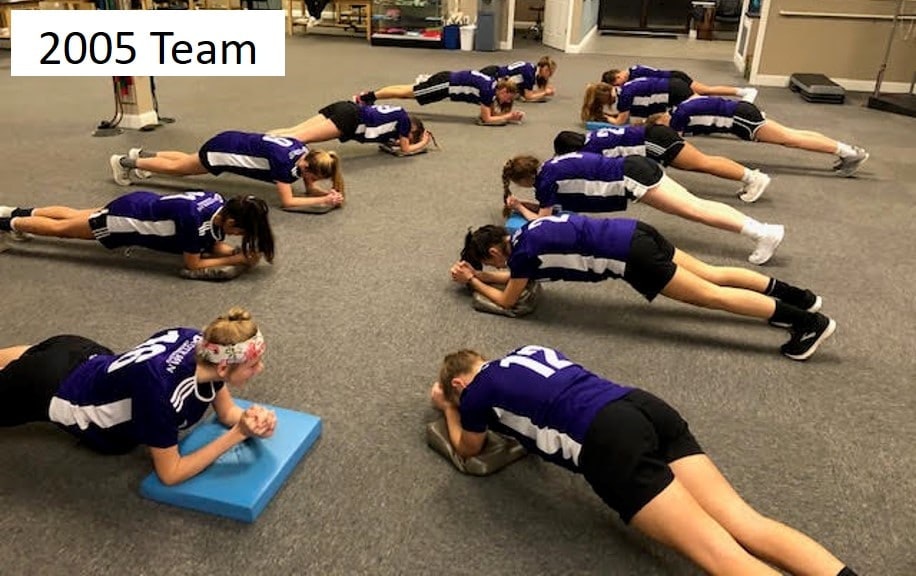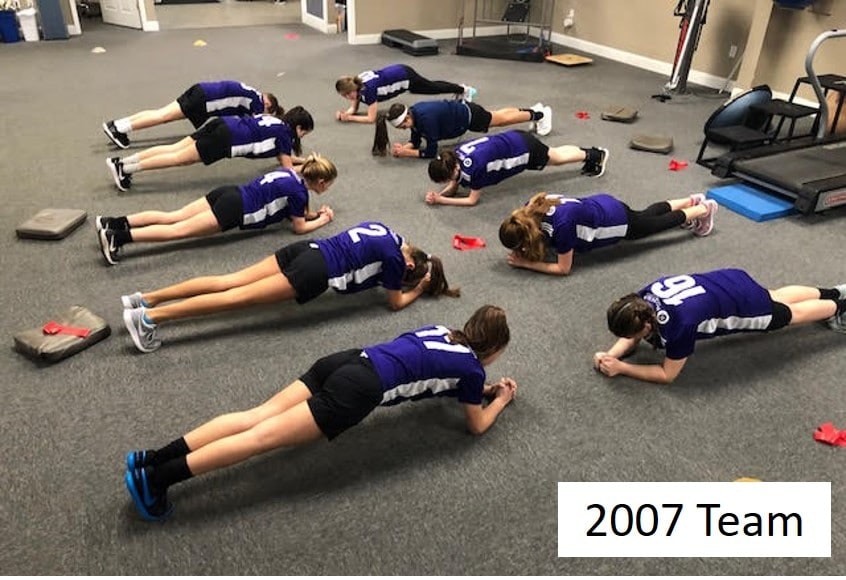
When it comes to ACL injuries, you might not think about poor core strength as a contributing factor. Similar to glute strength, core strength helps stabilize the knee with daily and sporting activities. The Clinical Practice Guidelines published by the Journal of Orthopaedic and Sports Physical Therapy states that exercise-based injury prevention programs for the knee that include trunk/core strengthening may help lower ACL injury rates.

Photo credit:https://www.stack.com/a/soccer-agility-lateral-strength-exercises
Core and hip strength and stability can influence knee control during single limb and cutting motions which are commonly seen in lacrosse, soccer, and basketball. Core control is important for handling contact and perturbation during sports, and when weakness is present, athletes may have less control over how body’s response to stimuli. Athletes with decreased core strength, demonstrate larger lateral trunk movement with sudden movements and this can increase the risk of knee injuries.
Core stability improves an athlete’s ability to prevent buckling of joints and to return the body to equilibrium after perturbation. For example, a soccer player with optimal core control can prepare the body for cutting quickly to shoot on an open net. Weakness would impact the athletes ability to control quick movements and possibly place the ankle, knee and hip in undesirable positions.
Research suggests deficient core muscles may increase the risk of lower extremity injury. The good news is that additional studies show that core training can improve single-limb stability and neuromuscular control. There are a variety of core exercises that are beneficial and most do not require gym equipment. Plank and single leg bridges are two core exercises you can start today to help strengthen proximal muscles. Adding resistance, hip movement, and instability are easy ways to make planks more challenging as well.
In our ACL injury prevention program with REAL Jersey Football Club teams, we challenged our players to a Plank challenge to see who could hold a plank – in correct form – the longest! For the 2007 team, the longest plank was 3 minutes and 30 seconds and for the 2005 team, the longest plank was held for 4 minutes and 15 seconds! Check out the photos!


Sources:
1) ACL Injury Prevention: What Does Research Tell Us? Nessler et al 2017
2) Core Stability and Its Relationship to Lower Extremity Function and Injury, Wilson et al 2005
3) Mechanisms, Prediction, and Prevention of ACL Injuries: Cut Risk WithThree Sharpened and Validated Tools, Hewett et al 2016
4) Exercise-Based Knee and Anterior Cruciate Ligament Injury Prevention, Arundale, et al 2018
Categorized as: ACL Injury Prevention Resources